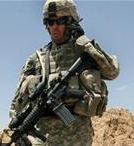The initial purchase price of your rugged computer may only be a small part of the Total Cost of Ownership (TCO). Platform support, customization, integration, connectivity, and inadequate durability may make your “bargain” very expensive. Will your rugged computer be good for your ROI five or ten years from now or just for today?
small part of the Total Cost of Ownership (TCO). Platform support, customization, integration, connectivity, and inadequate durability may make your “bargain” very expensive. Will your rugged computer be good for your ROI five or ten years from now or just for today?
Commercial Off the Shelf (COTS) products are attractive for the price and established supply chain. However, there is a fundamental problem buying mass-produced off-the-shelf items. New and upgraded products typically generate more profit than old ones. Corporations prioritize the overhead of product support for the greatest revenue earners, i.e. the new products. Support for older platforms is phased out.
“COTS Obsolescence” has hit the military especially hard. Despite its behemoth budget, the Defense Department is still only a tiny fraction of the electronics market, so vendors do not always place their needs first. Obsolescence of COTS products and parts has been estimated to cost the Navy alone $750 million annually.
In other words, “It’s possible to translate a $100 supply problem into a $100-million problem.” (John Becker, DMSMS Director, Office of the Asst. Deputy Undersecretary of Defense for Logistics, Plans and Programs, Getting a Handle on COTS Obsolesence, Avionics)
For AMREL, COTS Obsolescence is an important issue, because our mobile computers are often integrated into more complex systems. Even if our clients could replace our computer with a similar platform, could integrators ever be sure that it would truly perform the same? That’s why we support our computers for years longer than typical (WE support the computer; repair services are not outsourced to third parties). In an era when graphic cards become obsolete within a year, and computers fade as quickly as the latest fad, AMREL supports its platforms for at least 5 to 7 years, even longer.
In addition to COTS Obsolescence, TCO can be affected by customization costs and configuration stability. For more information, visit Total Cost of Ownership (TCO).





That is a very good point. At RuggedPCReview.com we’re often pitched on the many benefits of COTS, and often there are good arguments for taking advantage of readily available off-the-shelf components or equipment.
However, as you pointed out, the dark side of commercial off the shelf is that a lot of stuff doesn’t stay on those shelves for very long, and then it can become a service and repair nightmare.
Many component manufacturers are aware of the issue and try to address it in various ways (like Intel’s “embedded” and extended availability chips), but in the end it’s the device manufacturer or integrator that carries responsibility.
To me, the answer would seem a hybrid approach: Do take advantage of COTS components, but select them smartly with an eye on expected life cycle, and then combine that with the type of platform support AMREL offers.
I also feel that rugged system manufacturers might want to consider using embedded modules. That way, an application-specific carrier board with, say, a COM-Express CPU board would not become obsolete for many years because staying current with performance standards would simply mean replacing an inexpensive module.